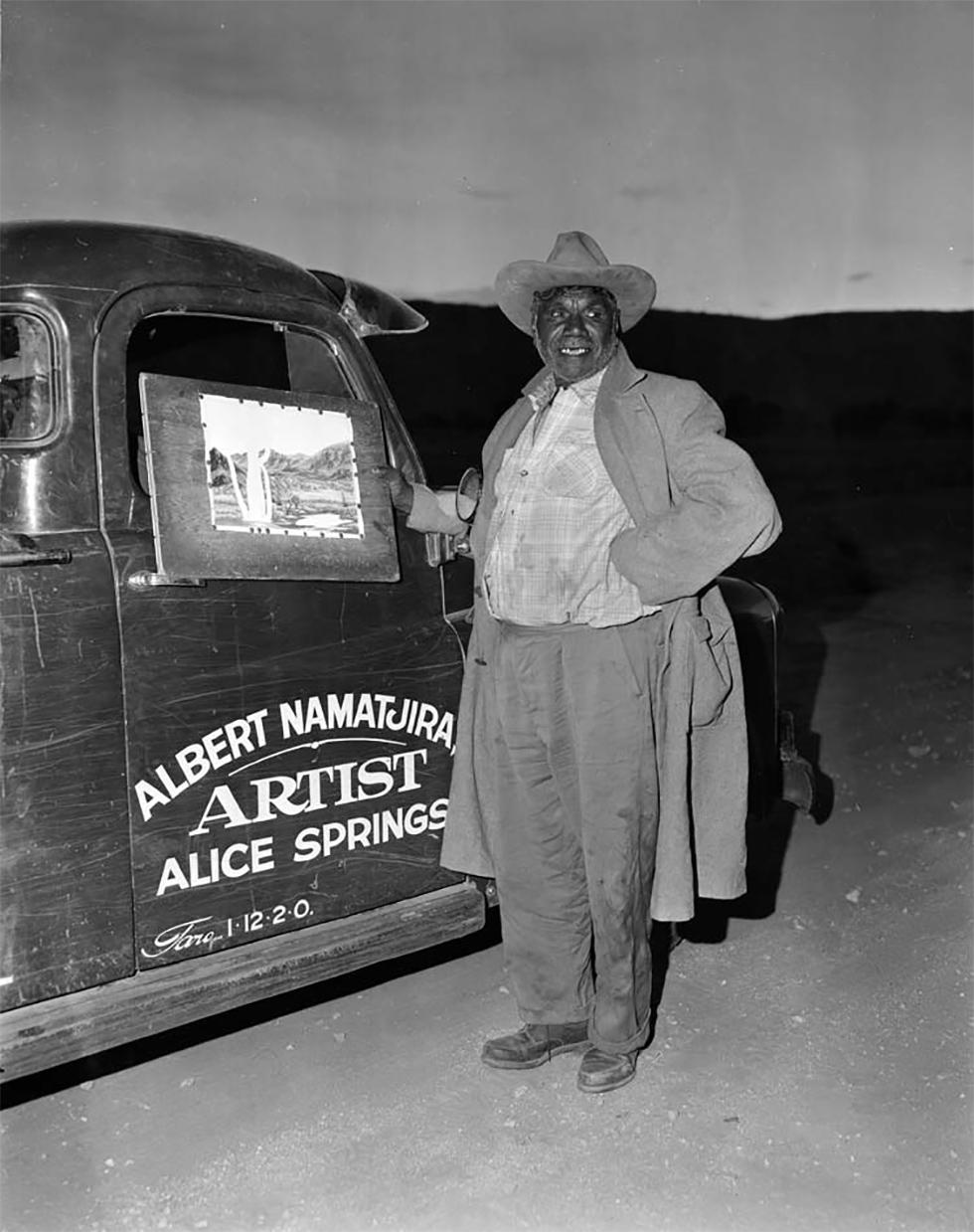


About this record
This black-and-white photograph shows the famous Australian artist Albert Namatjira standing beside his truck, displaying a landscape painting which is pinned to a backing board. Visible on the truck door is the sign ‘ALBERT NAMATJIRA / ARTIST / ALICE SPRINGS’. Namatjira himself appears relaxed with one hand on his waist.
Educational value
- This photograph shows the Western Arrernte artist Albert Namatjira (1902–1959) at the height of his fame, in the year he was granted citizenship. As an Indigenous Australian artist working in the mid-20th century, he was widely known among non-Indigenous Australians and internationally for his watercolours of the MacDonnell Ranges in central Australia. In 1953 he was awarded the Queen Elizabeth II Coronation Medal and was elected an honorary member of the Royal Art Society of New South Wales in 1955.
- The landscape Namatjira is holding is representative of his work and of the Hermannsburg School of which he was the foremost practitioner. The ghost gums with luminous white trunks and mountain ranges in the background of the painting are the hallmarks of his style and of the School. Hermannsburg Mission was established by Lutheran missionaries in 1877 and Namatjira learnt watercolour technique there from visiting artist Rex Battarbee in 1936.
- Painted using European watercolour techniques and praised at the time as evidence of the success of assimilationist policies, Namatjira's landscapes were subsequently derided as derivative, but are now understood to contain expressions of sacred knowledge from his traditional country. His parents were born in the MacDonnell Ranges – his father's country is the Ormiston Gorge area and his mother's Palm Valley. The Ranges are a recurring theme in Namatjira’s work and he travelled there often to paint.
- Namatjira was an artist long before he learnt the watercolour techniques for which he is best known. In his boyhood he sketched scenes and events happening around him. These included activities in the cattle yard, stockmen with their horses and people hunting game. He later made carved and painted artefacts such as boomerangs and woomeras and produced poker-worked mulga-wood plaques with designs made by burning them onto the wood with a heated poker.
- The signage on Namatjira's truck is indicative of his efforts to support himself and his family through his art, independent of the control exercised by Hermannsburg Mission and in the face of racial discrimination. Namatjira’s application for a grazing licence and his attempt to build a home in Alice Springs were both blocked by authorities and he was finally forced to house his family in a fringe camp at Morris Soak on the outskirts of Alice Springs.
- In 1957 Namatjira became an Australian citizen at a time when most Aboriginal people of full descent in the Northern Territory were wards of the state. In October 1958 Namatjira was sentenced to six months jail for supplying alcohol to a ward of the state, an Aboriginal man. As an Australian citizen Namatjira was permitted to buy alcohol but not – as was the custom in his community – to share it with friends and relatives. The sentence was reduced after a public outcry but Namatjira was a broken man. He died of heart failure the following year.
Acknowledgments
Learning resource text © Education Services Australia Limited and the National Archives of Australia 2010.
Related themes
Need help with your research?
Learn how to interpret primary sources, use our collection and more.




